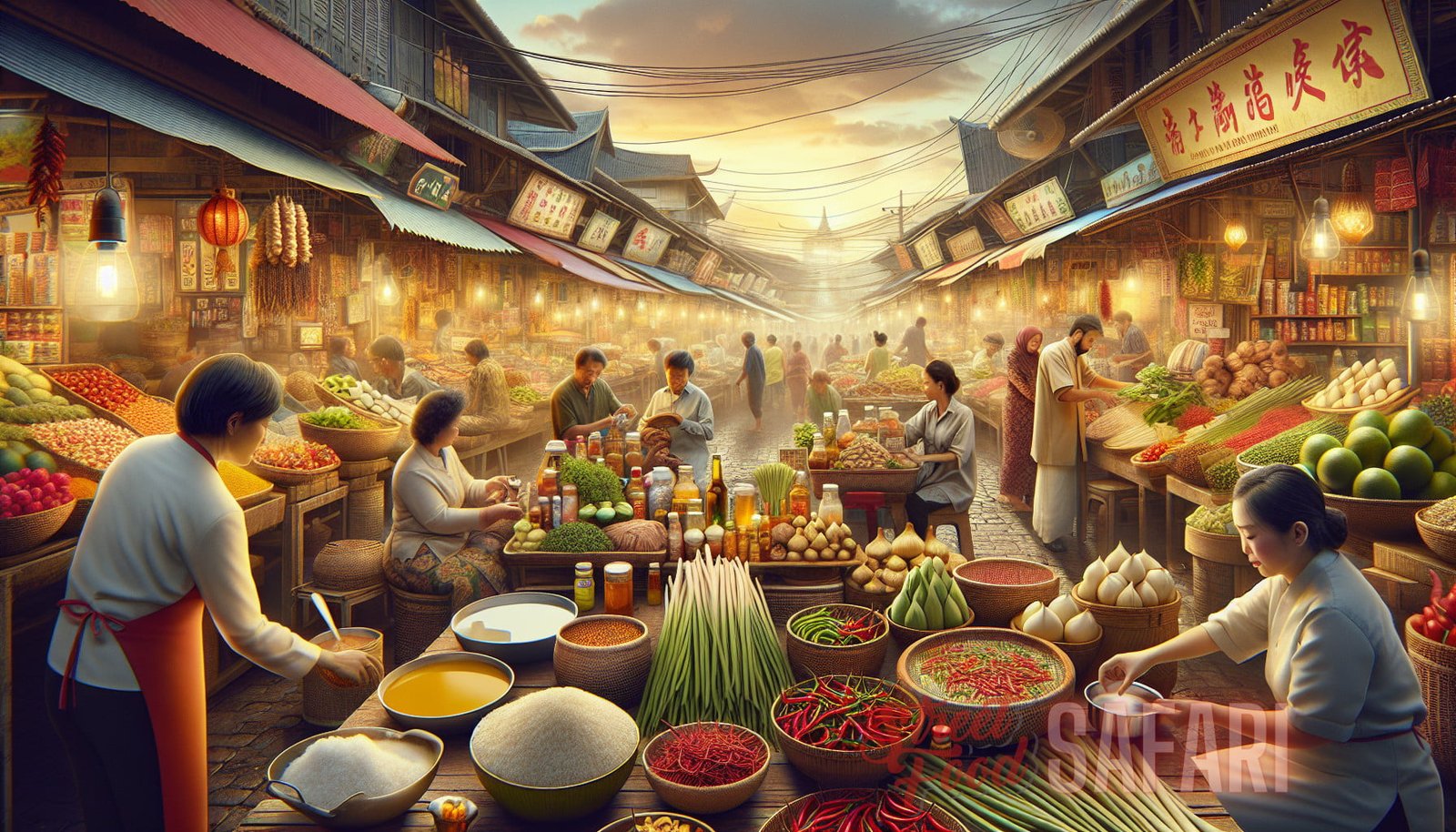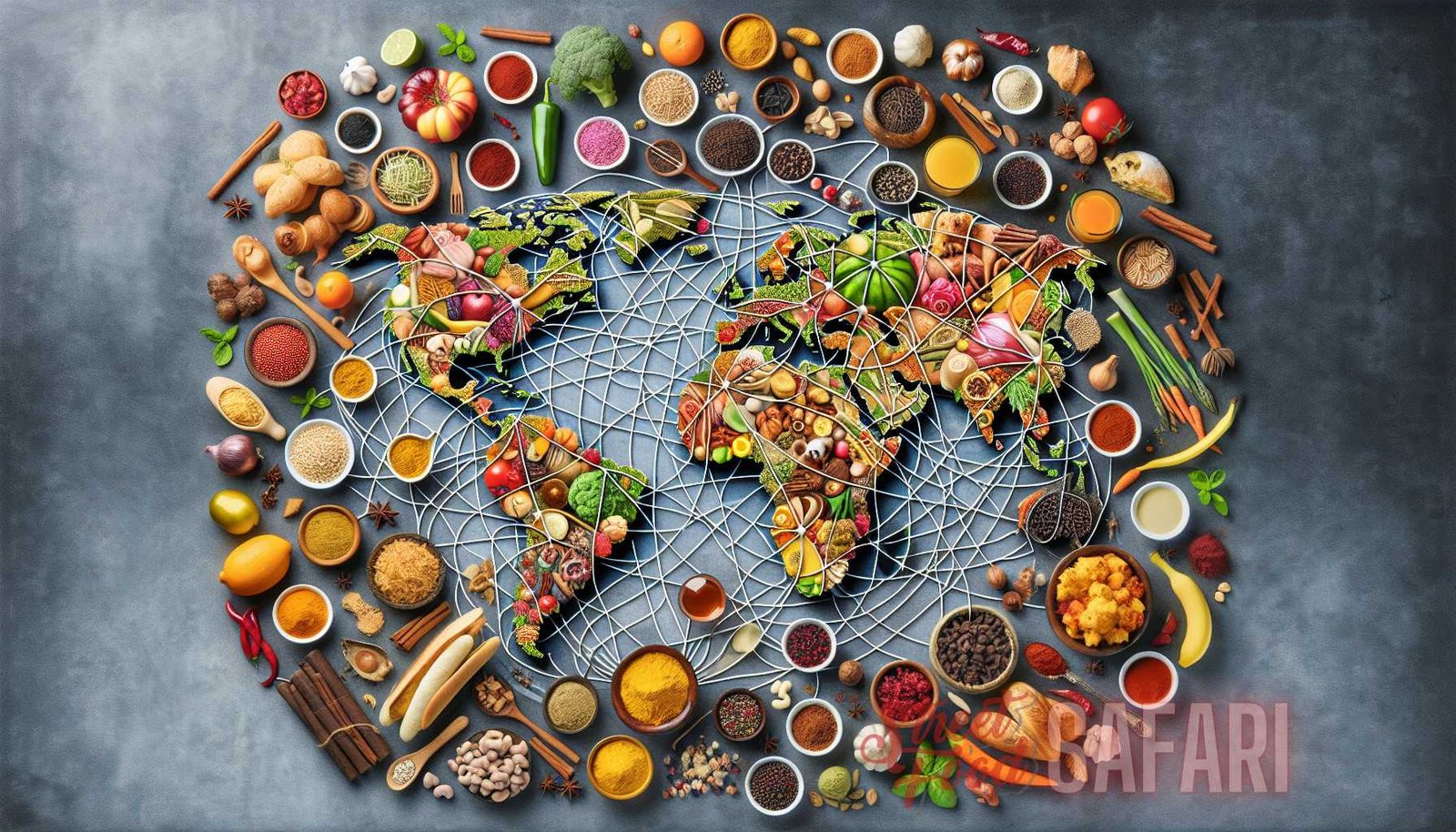Introduction
In today’s globalized world, the culinary landscape has undergone a transformation, with an increasing exchange of culinary traditions and ingredients between different cultures. This culinary exploration has resulted in the unearthing of hidden cultural influences within the bustling food markets around the globe. These markets serve as vibrant hubs of culinary diversity, where the flavors, techniques, and ingredients of different cultures blend together to create unique and captivating culinary experiences.
The Fascinating World of Global Food Markets
Food markets have long been a center of trade and cultural exchange, dating back to ancient civilizations. These markets offer a glimpse into the culinary traditions and cultural practices of a particular region, providing a sensory feast for locals and tourists alike. From the vibrant spices of the Middle East to the exotic fruits of Southeast Asia, global food markets showcase the diversity and richness of cuisines from around the world.
Crossroads of Cultures
Food markets are often located in major cities or tourist destinations, making them a natural crossroads of different cultures. In these bustling marketplaces, visitors can witness the intermingling of diverse communities, each bringing their unique culinary heritage to the table. This cultural exchange can be seen in the variety of ingredients, cooking techniques, and flavors on offer.
Meeting Points for Locals and Tourists
Global food markets are not only popular among tourists looking to explore new flavors but also attract locals seeking traditional and authentic ingredients. These markets serve as meeting points for people from different walks of life, fostering a sense of community and cultural pride. This dynamic mix of locals and tourists creates a vibrant atmosphere that adds to the culinary exploration experience.
Uncovering Hidden Gems
Within the bustling alleyways and vibrant stalls of global food markets, hidden culinary gems await discovery. These hidden gems can range from lesser-known dishes and ingredients to traditional cooking techniques that have been passed down through generations. By delving into these markets, one can uncover the hidden cultural influences that have shaped the culinary landscape of a particular region.
The Role of Globalization in Culinary Exploration
Globalization has played a significant role in the expansion and exchange of culinary traditions, resulting in the fusion of flavors and techniques from diverse cultures. As travel becomes more accessible and interconnectedness increases, culinary exploration has become more accessible to individuals from all corners of the globe. This has led to a greater appreciation for different cuisines and a desire to explore the roots of these culinary traditions.
The Influence of Travel and Migration
Travel and migration have been major catalysts for the exchange of culinary traditions. As people move from one place to another, they bring their culinary knowledge and practices with them, enriching the local food scene. This movement of people has led to the introduction of new ingredients, cooking techniques, and flavors in different regions, shaping the culinary landscape of global food markets.
Technology and Communication
Advancements in technology and communication have also played a crucial role in culinary exploration. With the rise of social media and food blogs, people can easily discover and learn about different culinary traditions from the comfort of their own homes. This increased accessibility to information has sparked a newfound interest in global cuisines and has motivated individuals to explore food markets in search of authentic culinary experiences.
Global Trade and the Availability of Ingredients
Global trade has made ingredients from different corners of the world readily available, allowing individuals to experiment with new flavors and ingredients. Global food markets are often stocked with a wide selection of imported ingredients, offering unique opportunities to explore and incorporate these flavors into one’s own culinary repertoire. This availability of ingredients has further contributed to the fusion of culinary traditions and the unearthing of hidden cultural influences.
The Culinary Melting Pot: Examples from Around the World
The culinary exploration of global food markets can be witnessed in various regions, each with its unique fusion of flavors and cultural influences. Let’s take a closer look at a few examples from different corners of the globe.
1. Southeast Asia

The bustling food markets of Southeast Asia are renowned for their vibrant and flavorful dishes. The region’s cuisine is a melting pot of Chinese, Indian, and indigenous flavors, resulting in a unique and diverse culinary landscape. Ingredients such as coconut milk, lemongrass, and chili peppers are staples in dishes from countries like Thailand, Vietnam, and Malaysia. These ingredients have been influenced by the spice trade routes that once connected Southeast Asia to the rest of the world.
2. Middle East
The Middle East is another region known for its rich culinary heritage, shaped by centuries of cultural exchange. Global food markets in countries like Lebanon, Israel, and Jordan offer a multitude of traditional dishes that feature ingredients such as olive oil, spices, and preserved lemons. The cuisine of the Middle East has been influenced by the ancient Silk Road, bringing flavors and ingredients from as far away as China and India.
3. Europe
In Europe, global food markets are a testament to the continent’s diverse culinary traditions. From the aromatic spices of the Mediterranean to the hearty flavors of Eastern Europe, European food markets are a treasure trove of culinary exploration. Ingredients such as olive oil, tomatoes, and herbs like basil and oregano have become synonymous with Mediterranean cuisine, while countries like Germany and Poland feature hearty dishes influenced by their neighboring regions.
Embracing the Culinary Exploration Experience
Exploring global food markets is not only an opportunity to taste new flavors but also a chance to learn about different cultures and their culinary traditions. To fully embrace the culinary exploration experience, consider the following tips:
1. Research
Before embarking on a culinary exploration adventure, research the local food markets and their specialties. Look for markets that are known for their authenticity and vibrant atmosphere. This will help you plan your visit and ensure you make the most of the experience.
2. Engage with Locals
When visiting global food markets, take the time to engage with the local vendors and food artisans. They can provide valuable insights into the cultural significance of certain dishes and ingredients. By talking to locals, you can gain a deeper understanding of the culinary landscape and the hidden cultural influences that shape it.
3. Try New Dishes
One of the joys of culinary exploration is trying new dishes. Be adventurous and sample unfamiliar foods that you come across in the market. This will not only expand your palate but also provide a deeper appreciation for the diversity of flavors and culinary traditions.
4. Attend Cooking Classes or Workshops
Some global food markets offer cooking classes or workshops where visitors can learn traditional recipes and cooking techniques. By participating in these classes, you can gain hands-on experience and a deeper understanding of the culinary traditions of the region.
5. Take Home Local Ingredients
Global food markets are a great place to discover unique ingredients that may be difficult to find elsewhere. Consider taking home some local spices, sauces, or other ingredients to incorporate into your cooking back home. This will allow you to continue the culinary exploration experience long after you leave the market.
Conclusion
Culinary exploration in global food markets offers a fascinating journey into the cultural influences that shape our culinary landscape. By delving into these vibrant marketplaces, one can uncover the hidden gems of different cuisines, discover unique flavors, and gain a deeper appreciation for the diverse culinary traditions of the world. So, grab your passport and embark on a culinary adventure that will tantalize your taste buds and broaden your cultural horizons.


